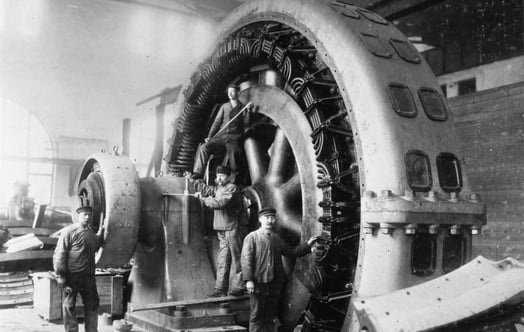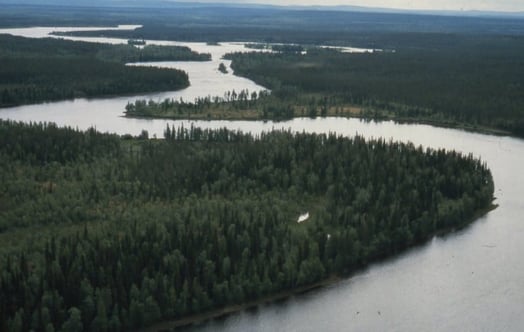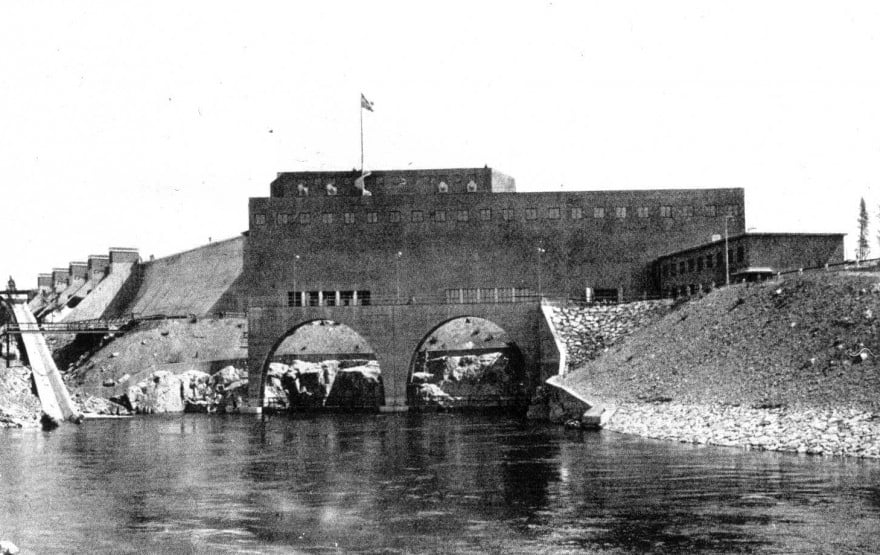
Massive investment in hydropower
Both during and after the Second World War, the demand for electricity increased dramatically. All forecasts were exceeded. Hydropower now had to be expanded at a furious pace. This was also possible thanks to the water rights that Vattenfall had acquired with foresight much earlier.
When hydropower exploitation began in earnest in the 1910s, there was a series of disputes over the rights to the water in the major rivers. The state was pitted against private interests. And in most cases, the state lost. But the head of Vattenfall Vilhelm Hansen had a clear strategy. If Vattenfall was to maintain its strong position as a power producer, it would need to purchase water rights for both current and future use. Between 1917 and 1920, a number of water rights were purchased under the leadership of then Chief Engineer, and later Director General, Waldemar Borgquist. In a relatively short time Vattenfall acquired a number of rapids, mainly in central Norrland – along the rivers Indalsälven, Ångermanälven and Ume älv.
The late 1930s – following a recession and depression – saw a renewed period of purchasing. Now interest had again focused on the rivers Indalsälven and Ume älv. But Vattenfall also purchased rapids in rivers further north, such as the rivers Vindelälven and Skellefte älv. These acquisitions meant that Vattenfall possessed over half of the expandable hydroelectric resources in the country. As a result, Vattenfall was now in a good position for the future. When the acquisitions were made, they were far from obvious, and were sometimes met with outright scepticism.
Video player requires marketing cookies.
To view this content please click here to allow marketing cookies.
A very special hydropower station: Kilforsen 1947-53 (in Swedish)
In autumn 1934 a new five-year plan was presented by Vattenfall. There were now few rapids left to exploit in southern and central Sweden, so interest was directed northwards, mainly to the river Indalsälven.
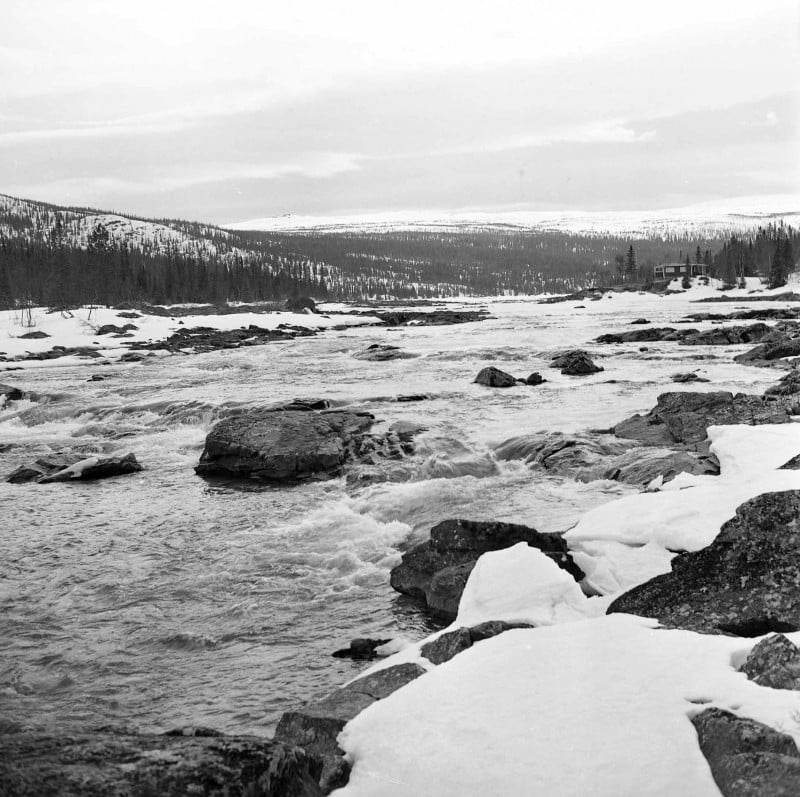
The river Ångermanälven. Year: - | Place: Ångermanland | Creator: Vattenfall | ID: VF000027
During the Second World War, Sweden became increasingly dependent on domestic hydropower for its energy supply. This need increased further when the railway was electrified due to a shortage of fuel. A number of dry years made the electricity supply situation even more difficult.
Demand arose for rapid expansion of hydropower, although there was some scepticism. It was generally envisaged that a recession would follow after the war, and voices warned of peace optimism. But economic development was a completely different matter. Sweden experienced an exceptional period of growth. Energy consumption rose by 7 per cent per year, which meant that capacity needed to double every ten years.
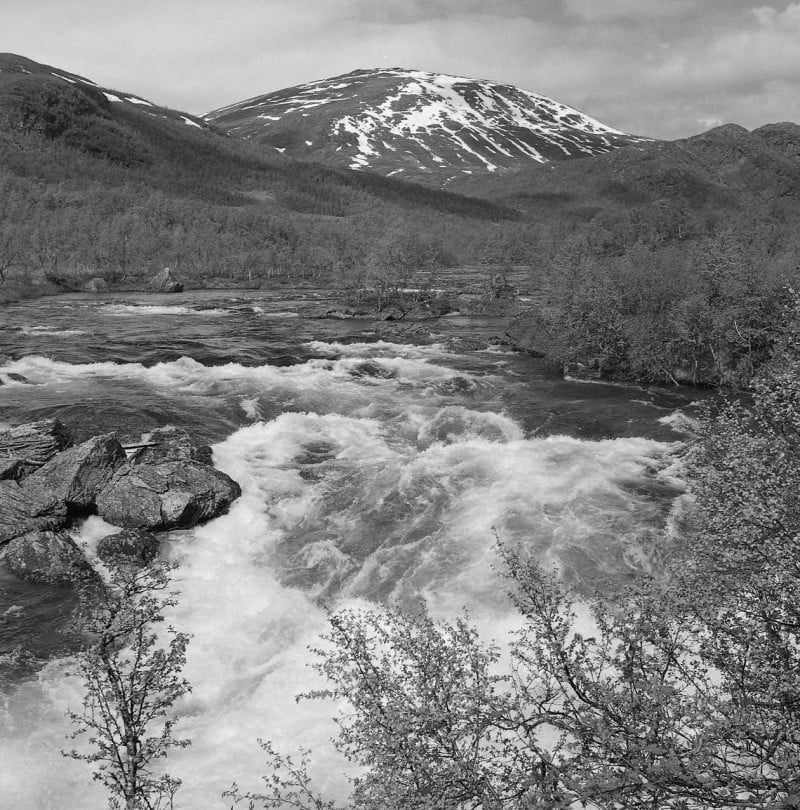
The river Ume älv. Year: - | Place: Ume | Creator: Vattenfall | ID: VF000028
Expansion at a record rate
Up to 1960, Vattenfall alone built 15 or so large or medium-sized plants in the rivers of Norrland. At the peak of activity, Vattenfall employed 5,000 in-house construction workers. The plants were not just numerous – they were built at a rapid rate. Power plants at Stadsforsen and Midskog, both along the river Indalsälven, took about three to four years to complete. Stalon was planned to take seven years, but actually took three. This rapid expansion meant that Vattenfall had to recruit large workforces – construction workers who moved from building site to building site. Water navvies, as they came to be called.
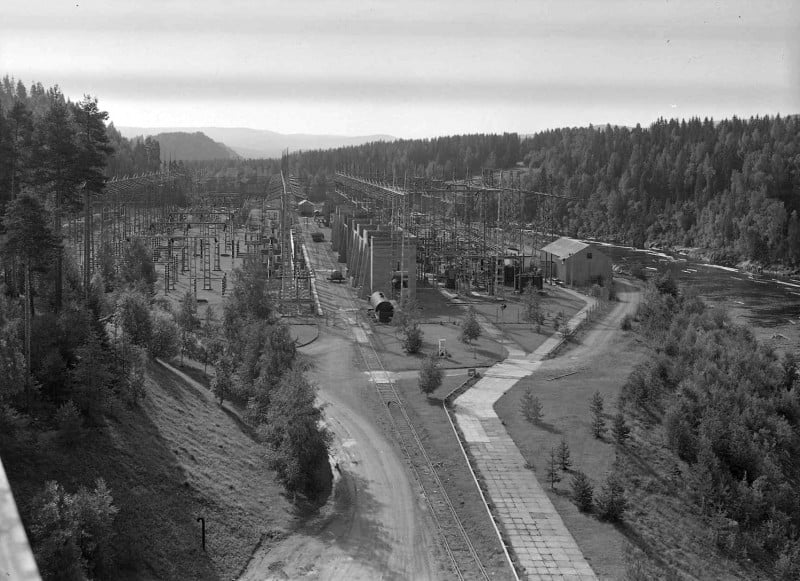
Stadsforsen power plant. Year: 1955 | Place: Stadsforsen | Creator: Vattenfall | ID: VF000030
During the 1960s, the power industry began to realise that there were no longer sufficient unexploited water resources to meet growing demand. Nuclear power began to be viewed as an increasingly attractive option instead. An emerging environmental movement also put pressure on politicians to protect rivers. And in 1970, following loud protests, the government decided not to exploit the river Vindelälven. A few years later the rivers Torne älv, Kalix älv and Pite älv also became subject to protection. The expansion era for Norrland power was over. However, hydropower is still extremely valuable, and its importance for regulating varying production, such as wind power, is only increasing.
Video player requires marketing cookies.
To view this content please click here to allow marketing cookies.
Inauguration of Stornorrfors hydropower station in 1959 (in Swedish)



